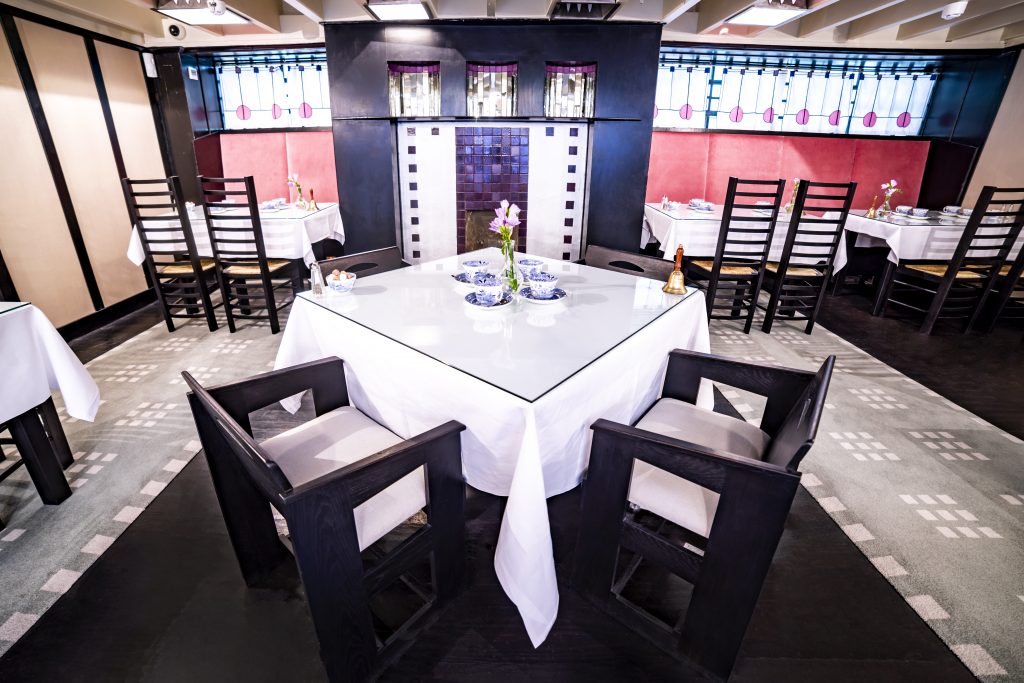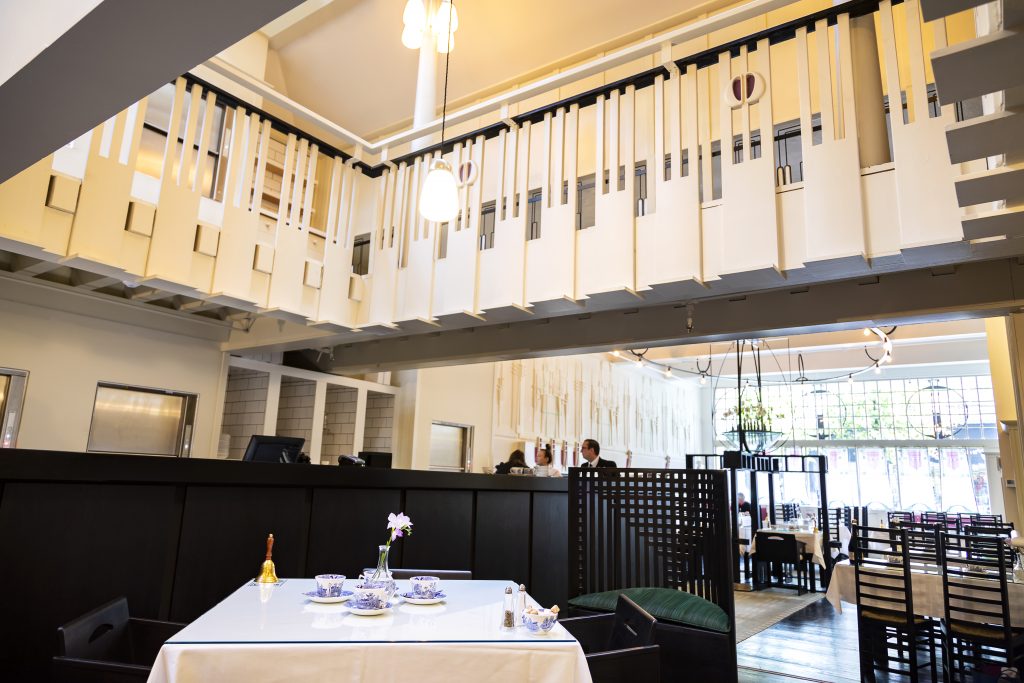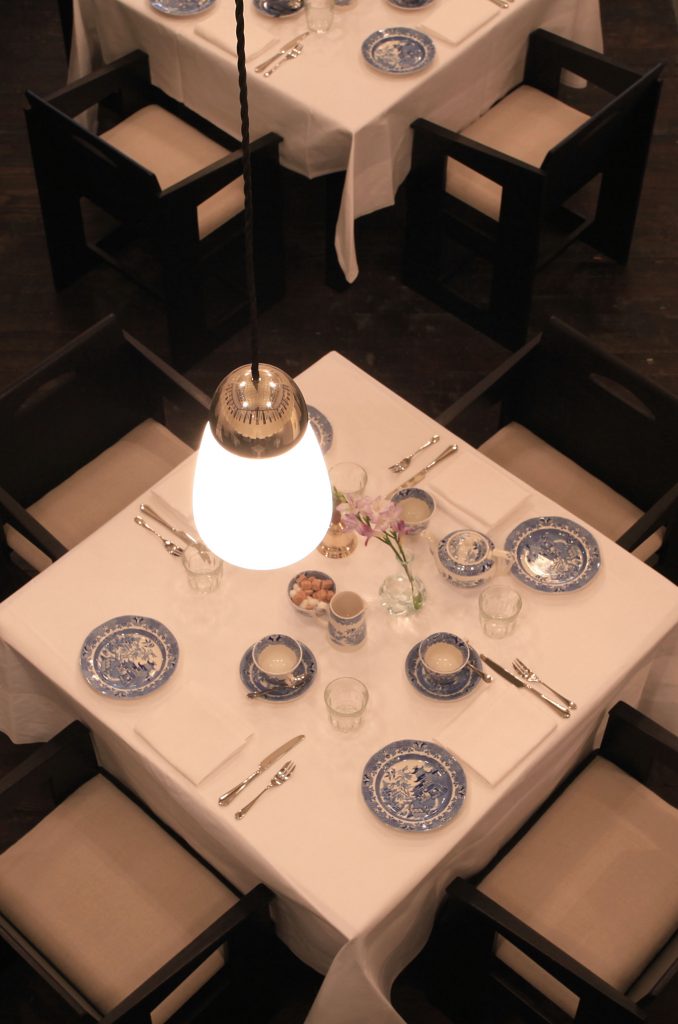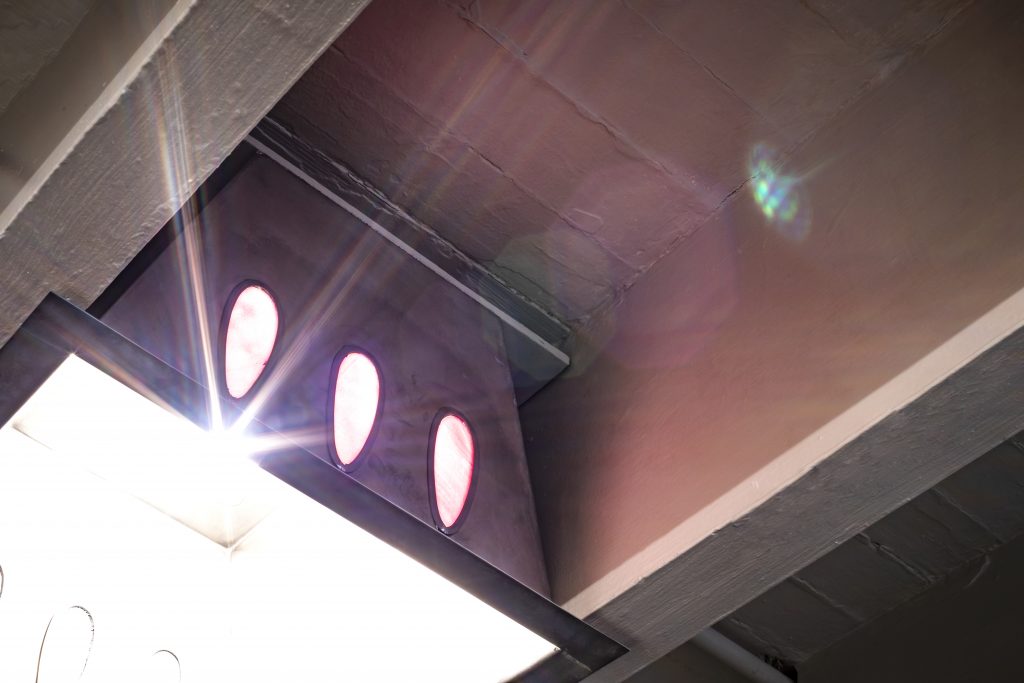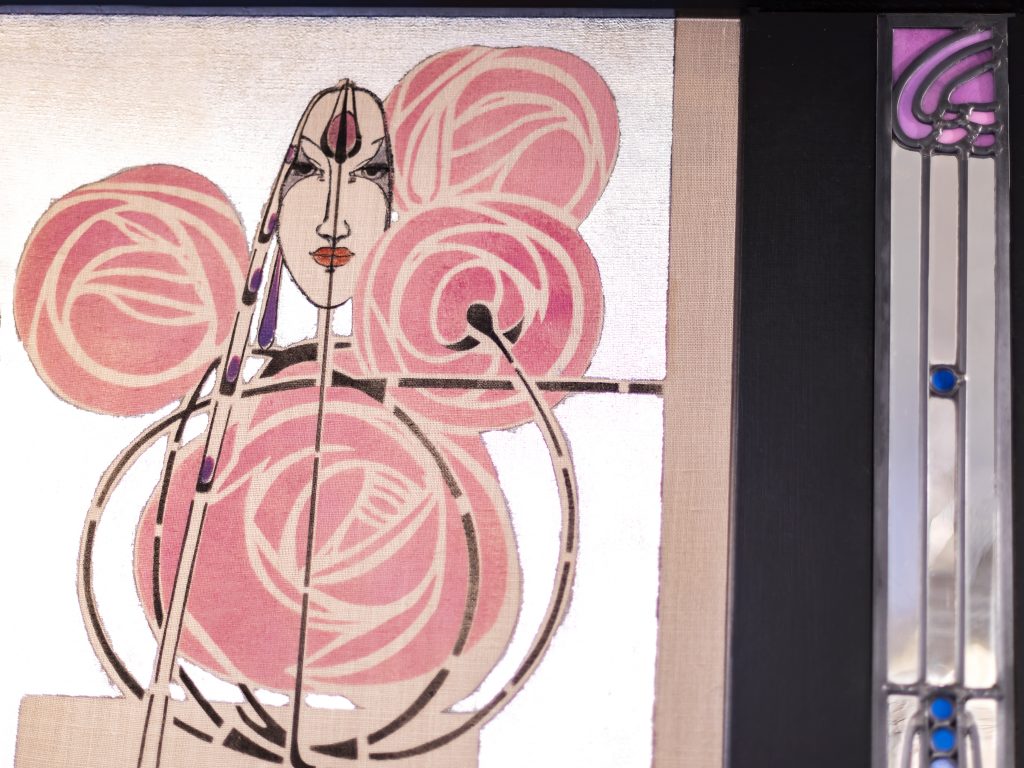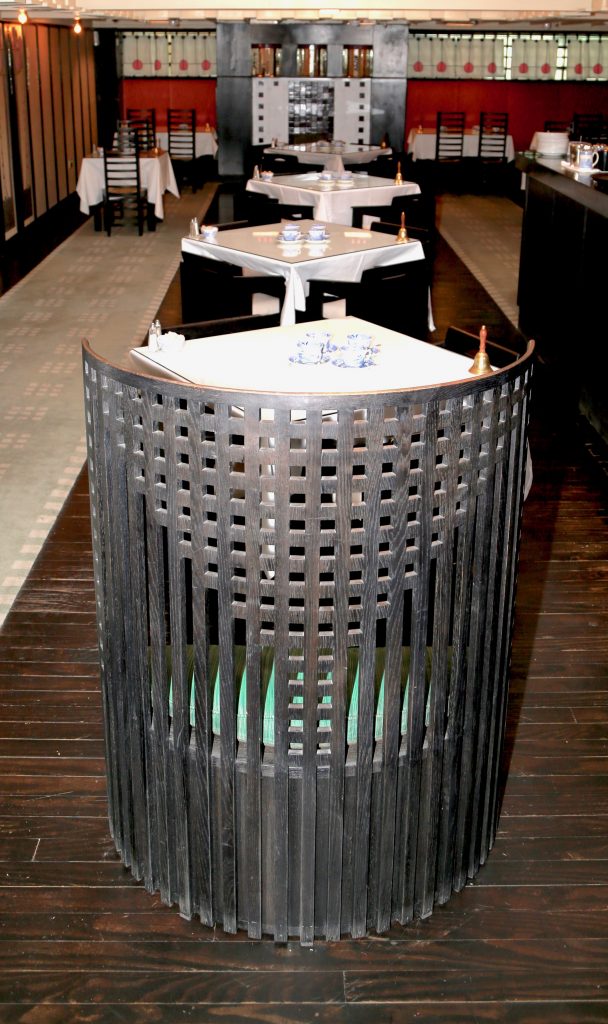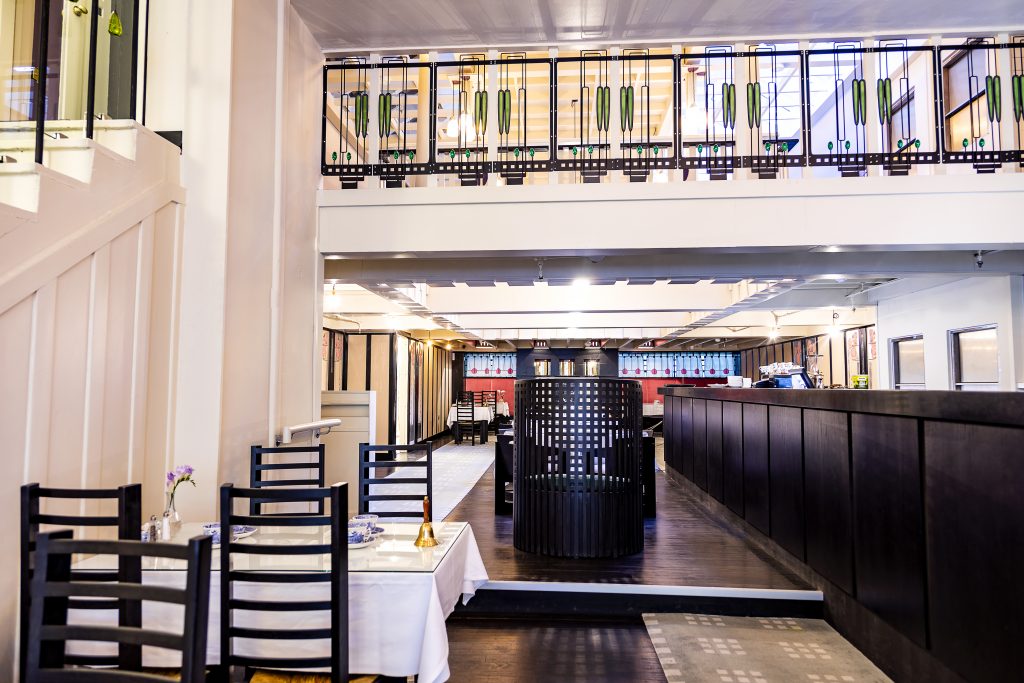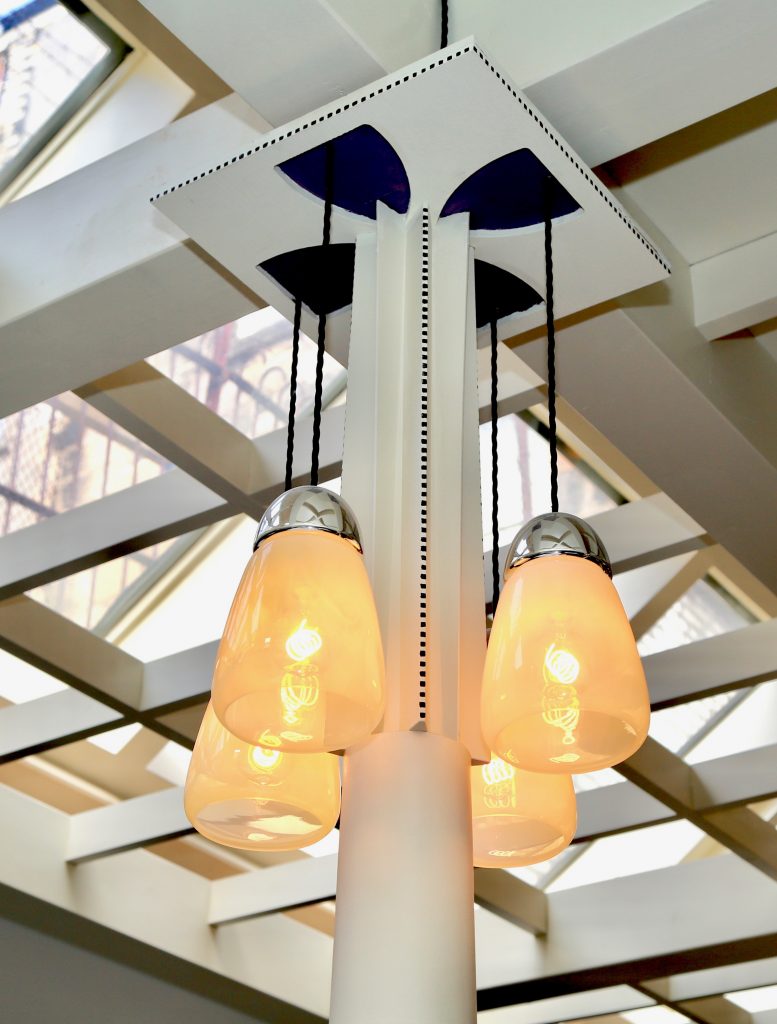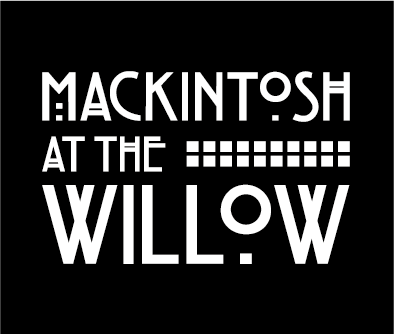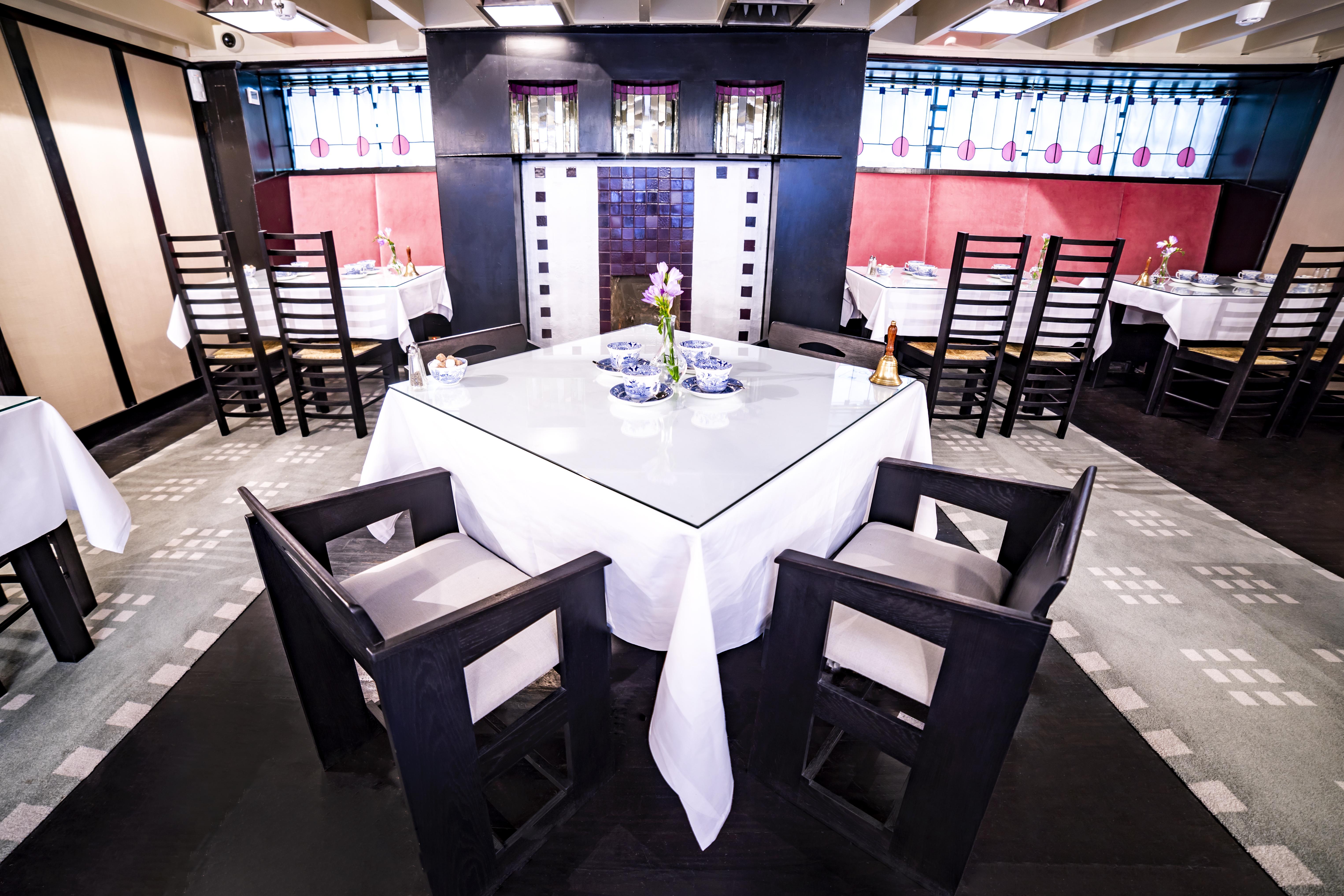
Mackintosh at the Willow, A Wee History – Part 6.
This week we will be discussing the Back Saloon! This beautiful space is situated on the ground floor adjacent to the Front Saloon and beneath the Gallery mezzanine. The Back Saloon is often the most overlooked room within Mackintosh at the Willow, with visitors finding a pre-occupation with the opulence of the Salon de Luxe or the brilliantly bright Front Saloon. However, to pass by this space without closer inspection would be to miss some of Mackintosh at the Willow’s most subtle and enchanting design features.
As mentioned in our previous posts, this area was designed to characterize a woodland glade that looks up to the Gallery, which is representative of a tree top canopy. Droplet shaped light fixtures are suspended from vertical columns in the Gallery and hang down towards the Back Saloon like heavy branches drooping toward the forest floor. Look upwards from the centre of the room you will see the trellised ceiling that mimics the dappled light of trees projected upon the ground.
Mackintosh was particularly interested in the use of light to enhance psychological spatial elements in his interiors, but also to represent elements of femininity and masculinity. This can be exemplified in the dichotomy of the Billiard Room and the Salon de Luxe in full effect. The “feminine” Salon de Luxe is exceptionally bright, something that is emphasised with an abundance of mirrors, glass, glittering lights, and silver surfaces. The designated “masculine” space of the Billiard Room employs dark wood, forest green textiles, shaded lighting, and moody, heavy fixed interiors. The rooms adhere to the traditional concepts of male and female that are not as prevalent in the 20th Century with the use of light and dark. This is achieved by aligning masculine energy with something darker and physically more substantial while contrasting this to the historic idea of femininity, which is dainty, lighter, and not as physically imposing.
The use of mirrors includes visitors in the production of the room so that guests do not just view the rooms, they are also being viewed and viewing themselves viewing the space. This creates a visual duality that can be seen in further effect in the Salon de Luxe. We find ourselves looking through the mirrors at a refracted image of ourselves but also others in the tea rooms. The original fireplace is adorned with mirrored alcoves that are set with mirrors that follow the curve of their setting and glitter with movement in the room. Mirrors also lift the moodier aspects of this space, which is cosier and more sheltered than the rest of its surroundings, creating a dark little nook in the back of the building.
In the Back Saloon you have linen panels framed by dark wood which is very in keeping with the Japanese design aspects in the building. Further to this, there are the iconic ‘Lady of the Rose’ carefully painted upon select panels and flaked by thin mirrored panels. The very classically Japanese features of the painting are obvious and their placement, looking out on the viewer from between roses, gives them an ethereal fairy-like quality. The use of silver paint in the background of these images, paired with the mirrors, gives the illusion of beams of sunlight coming through the trees above and illuminating the room.
Today, a replica of Miss Cranston’s Cashiers Chair is situated in the Back Saloon, just in front of the servery. This beautifully designed chair is curved to almost form a semi-circle which would have accommodated the large Victorian-style skirts that Miss Cranston was known to wear. The Back of the chair creates a fragmented willow tree design with the use of an almost screen-like effect of trellised wooden slotting of pieces of wood. The seat itself is covered with a dark green material and lifts to reveal a storage space to keep money and receipts – another clever design!
On the right day, at around 4pm when the sun is shining, the sunlight pours through from the Gallery above to line up exactly with the carpet in the Back Saloon. It is these very elements of magic in Charles Rennie Mackintosh’s design features that make Mackintosh at the Willow an utterly magical place.
